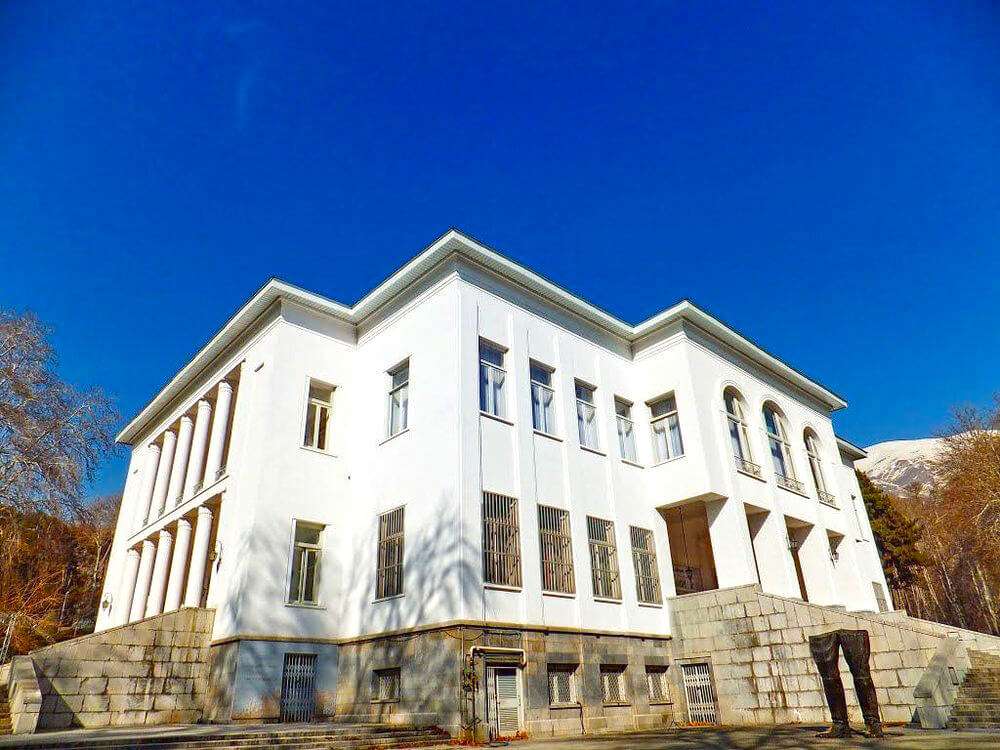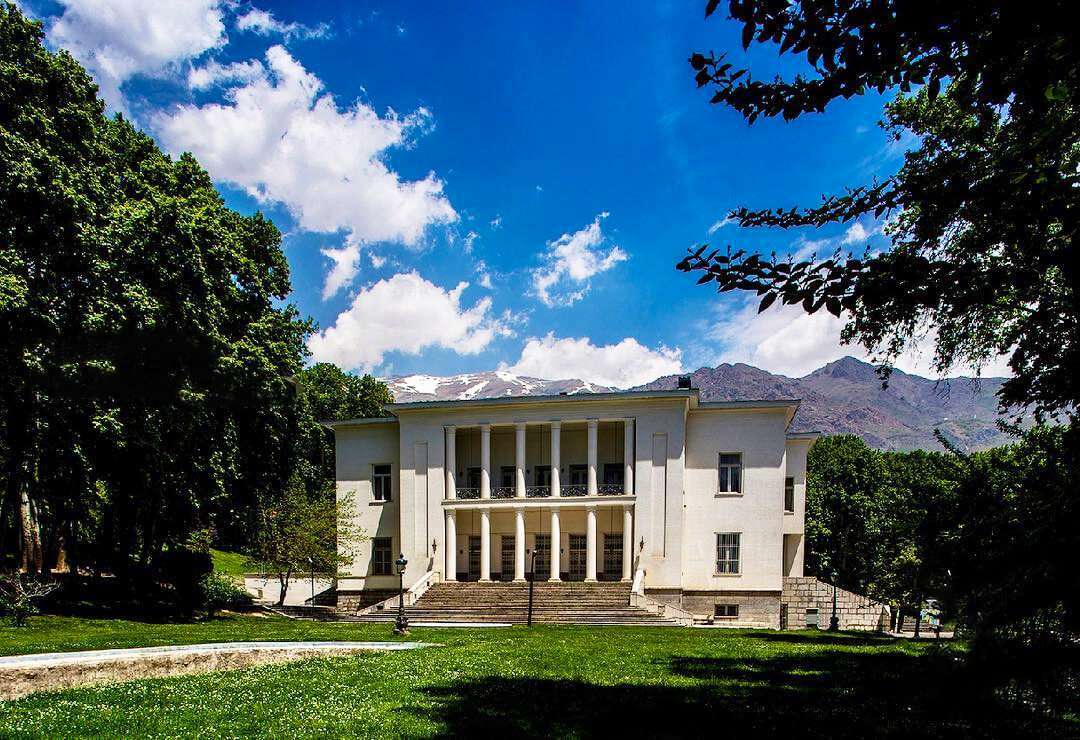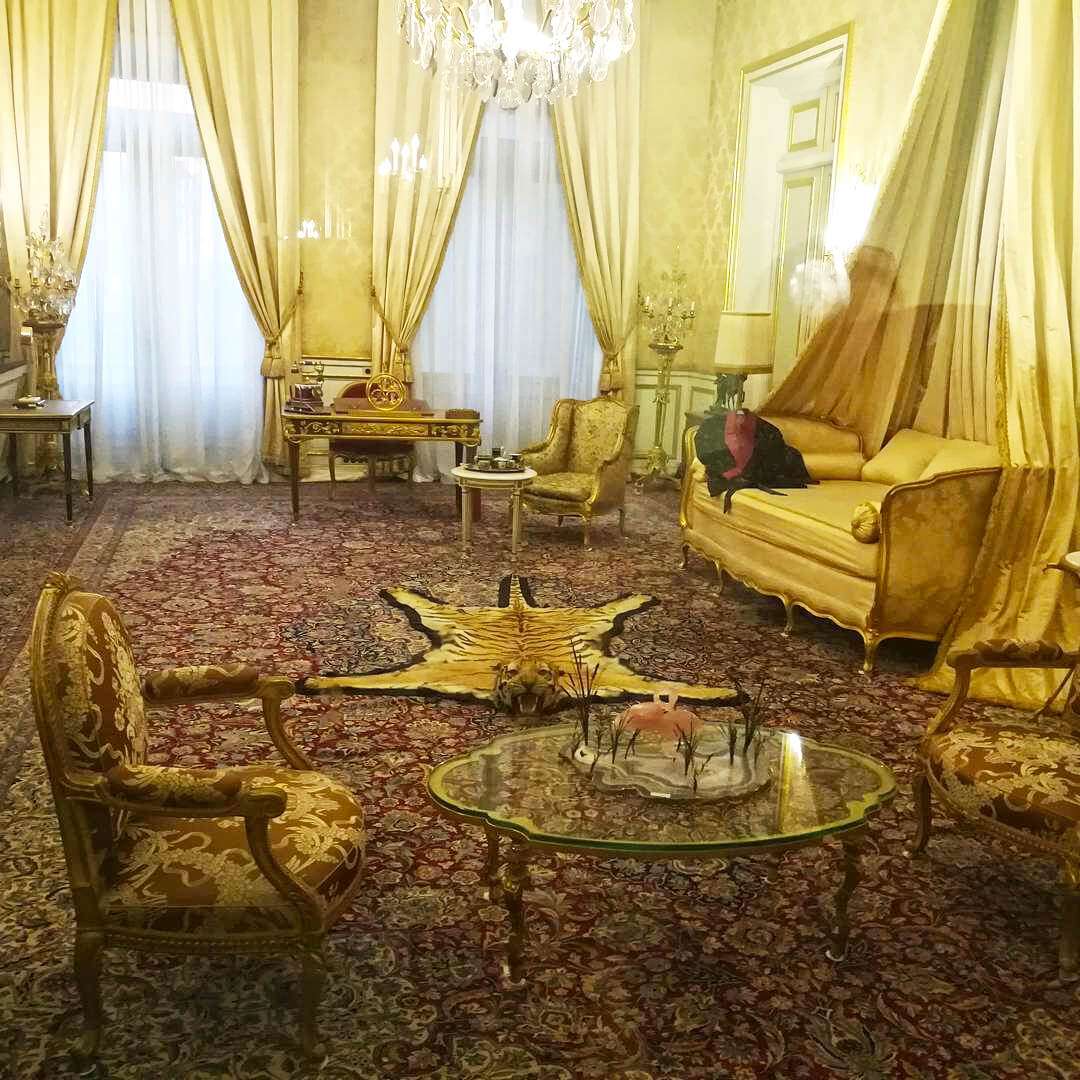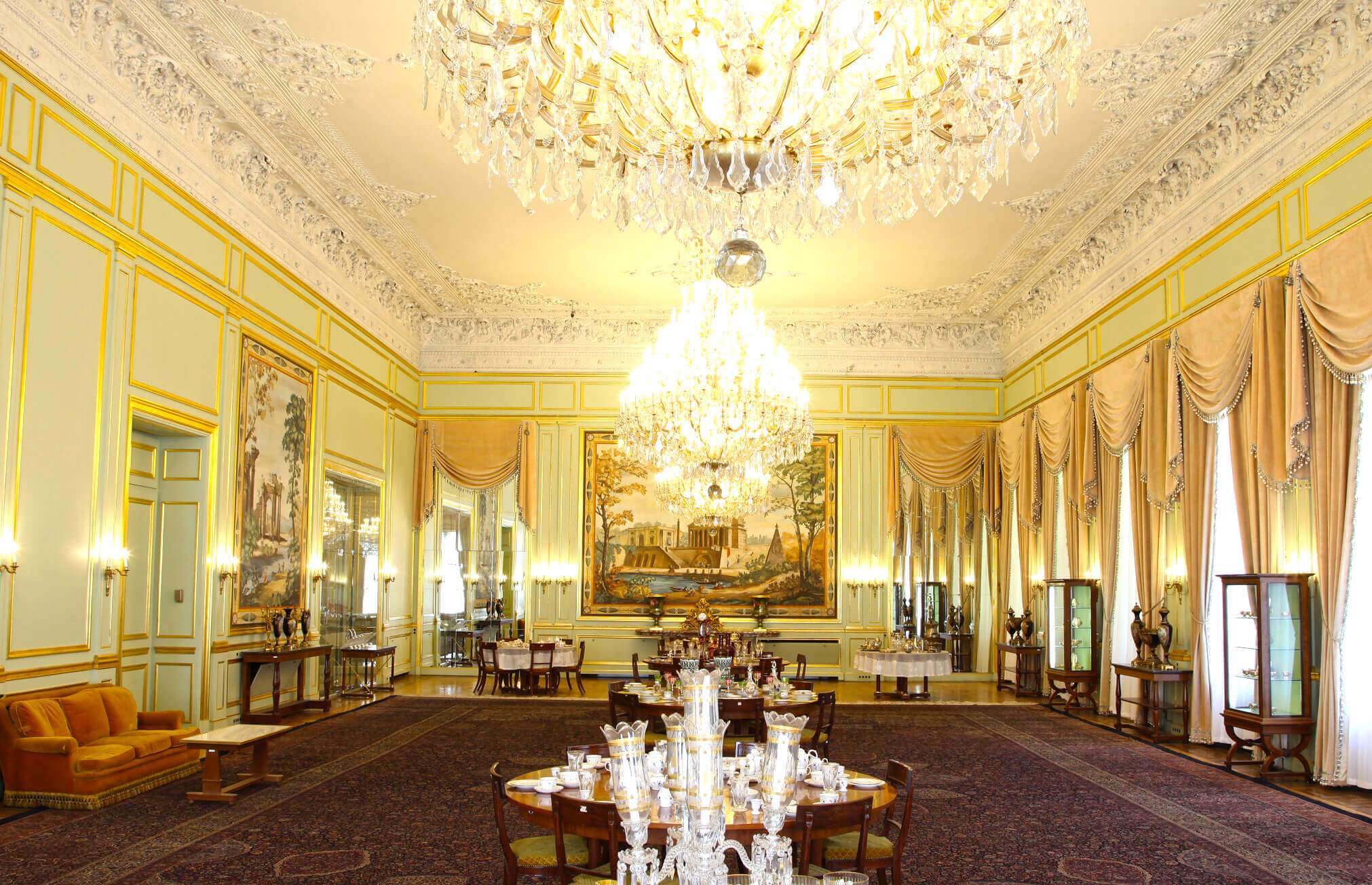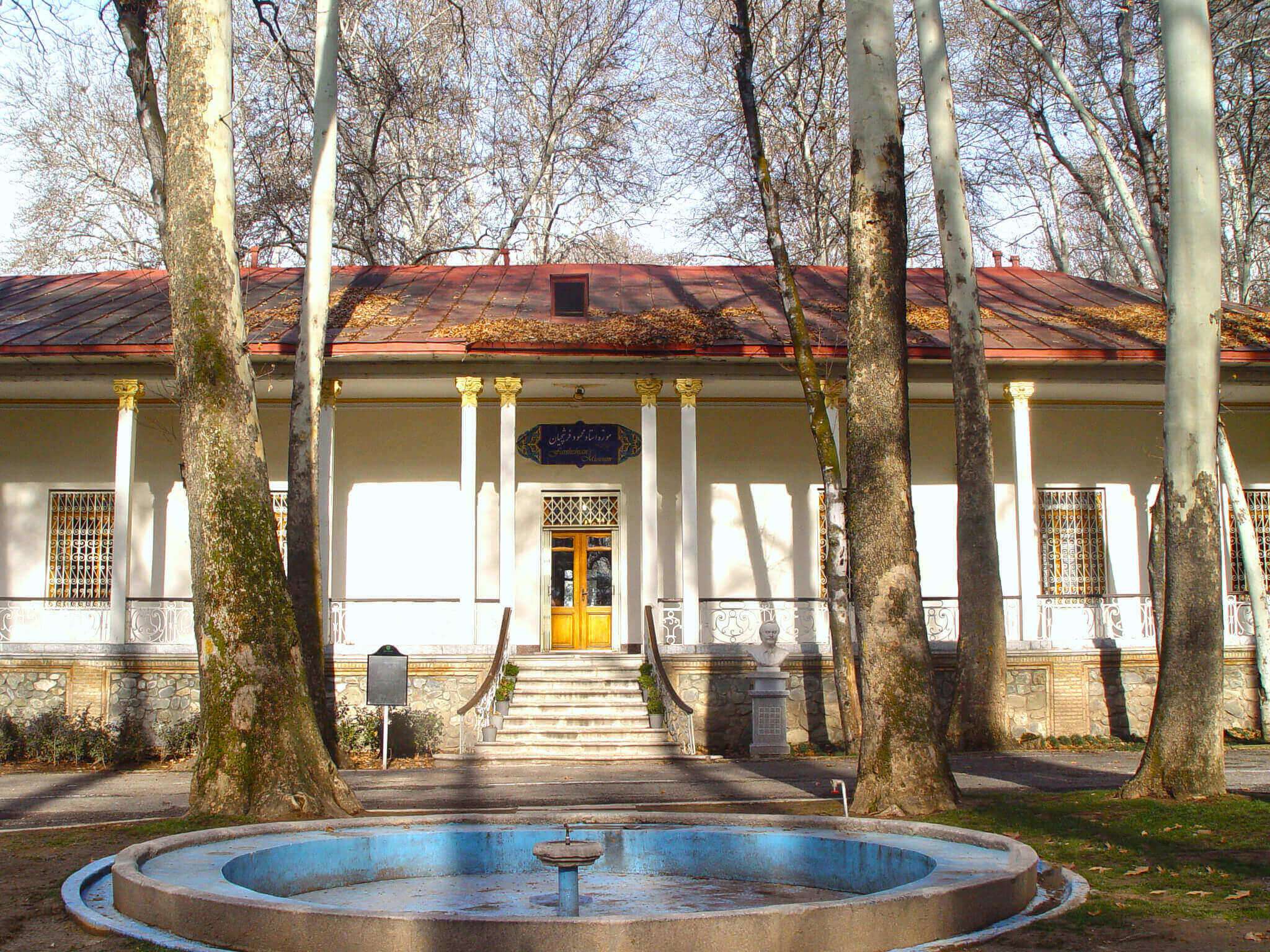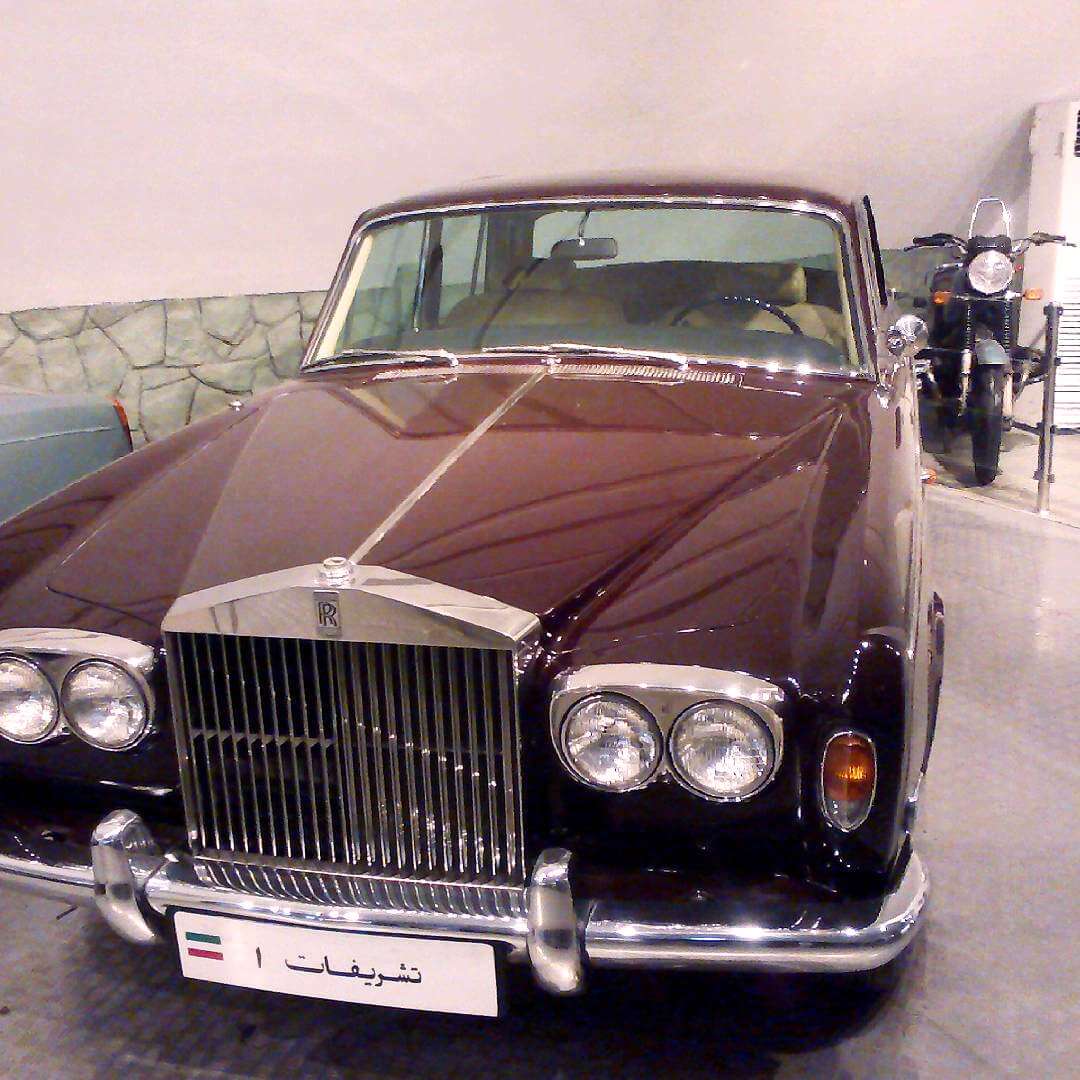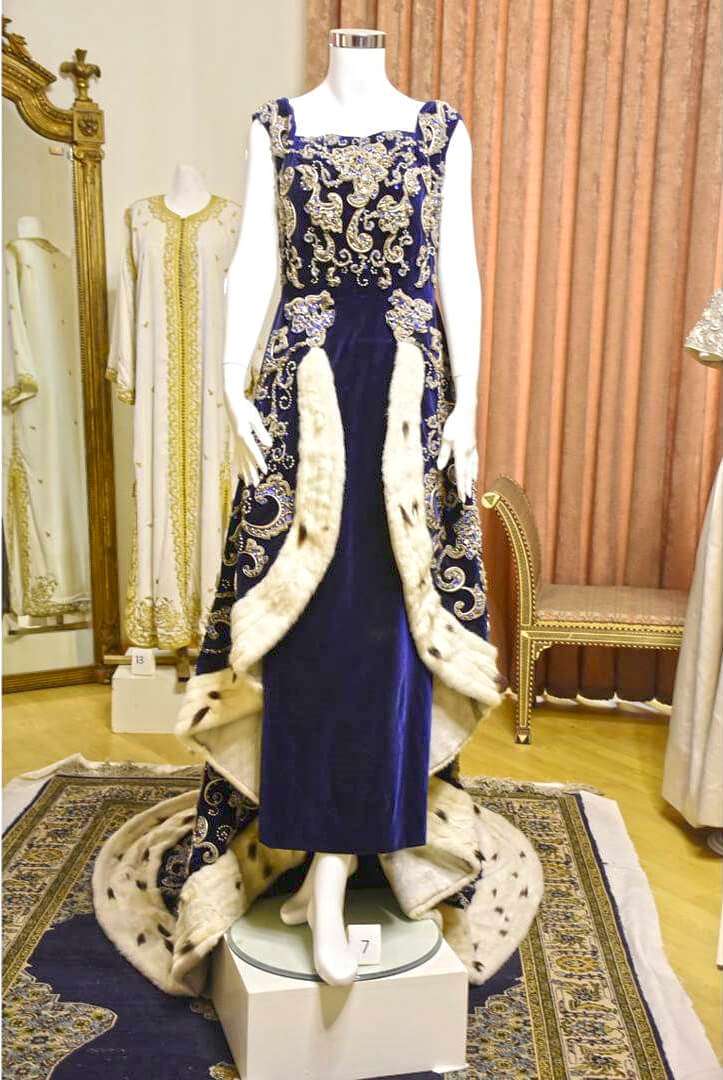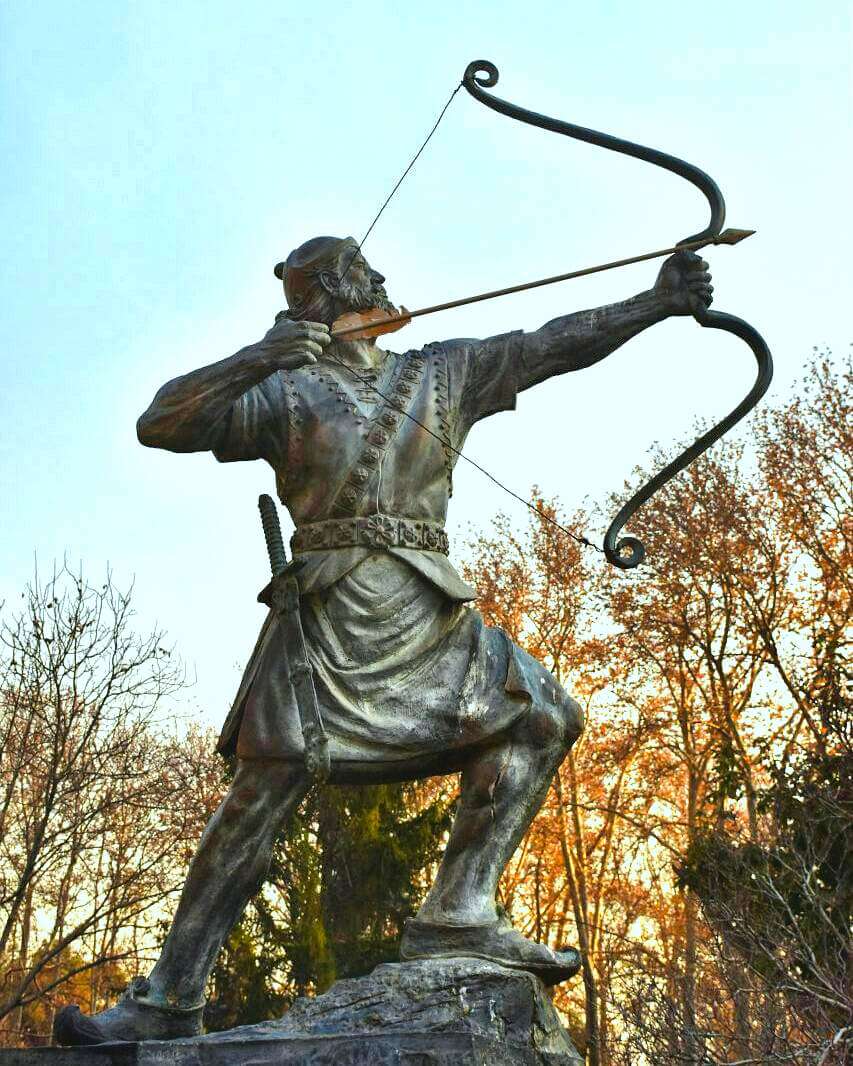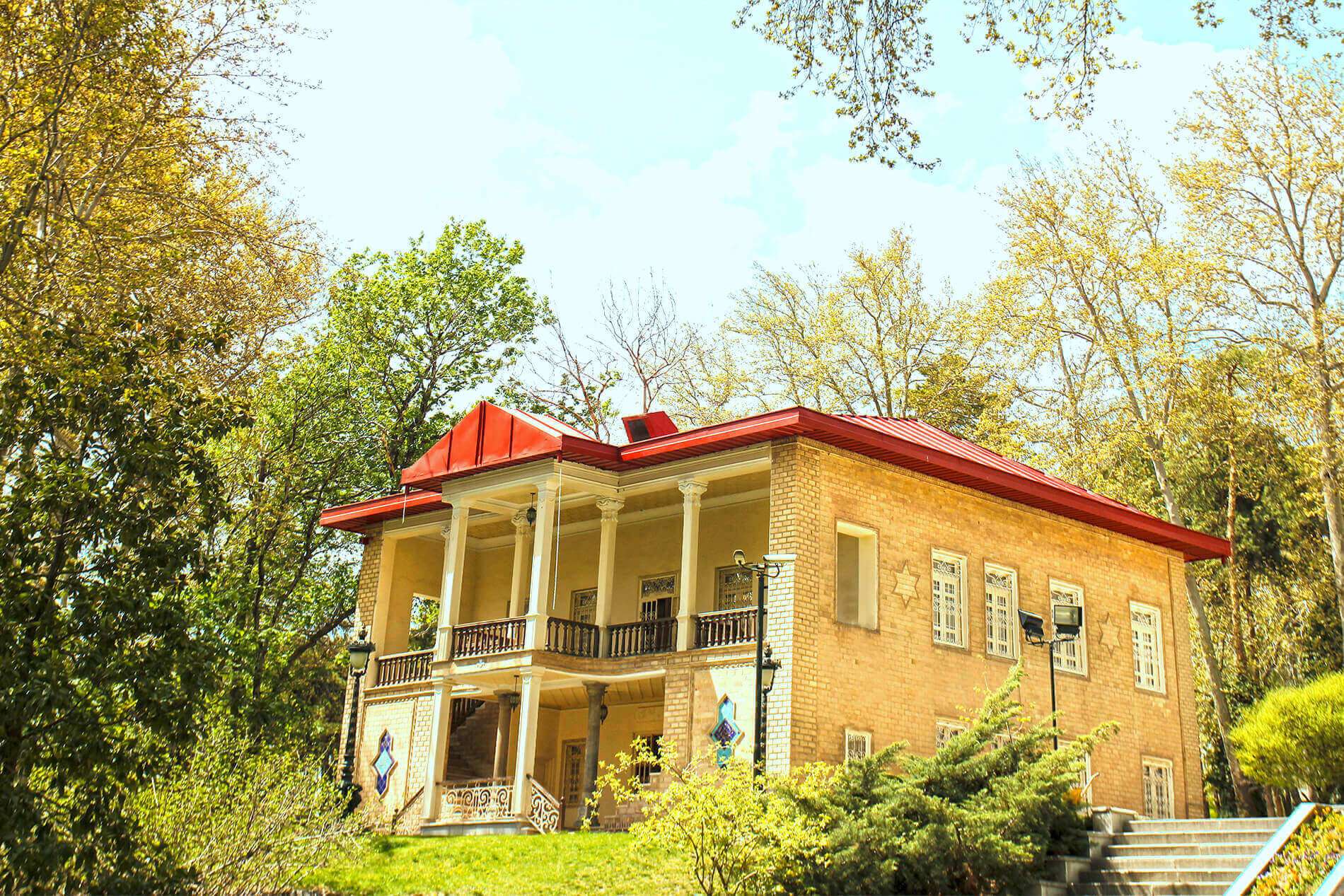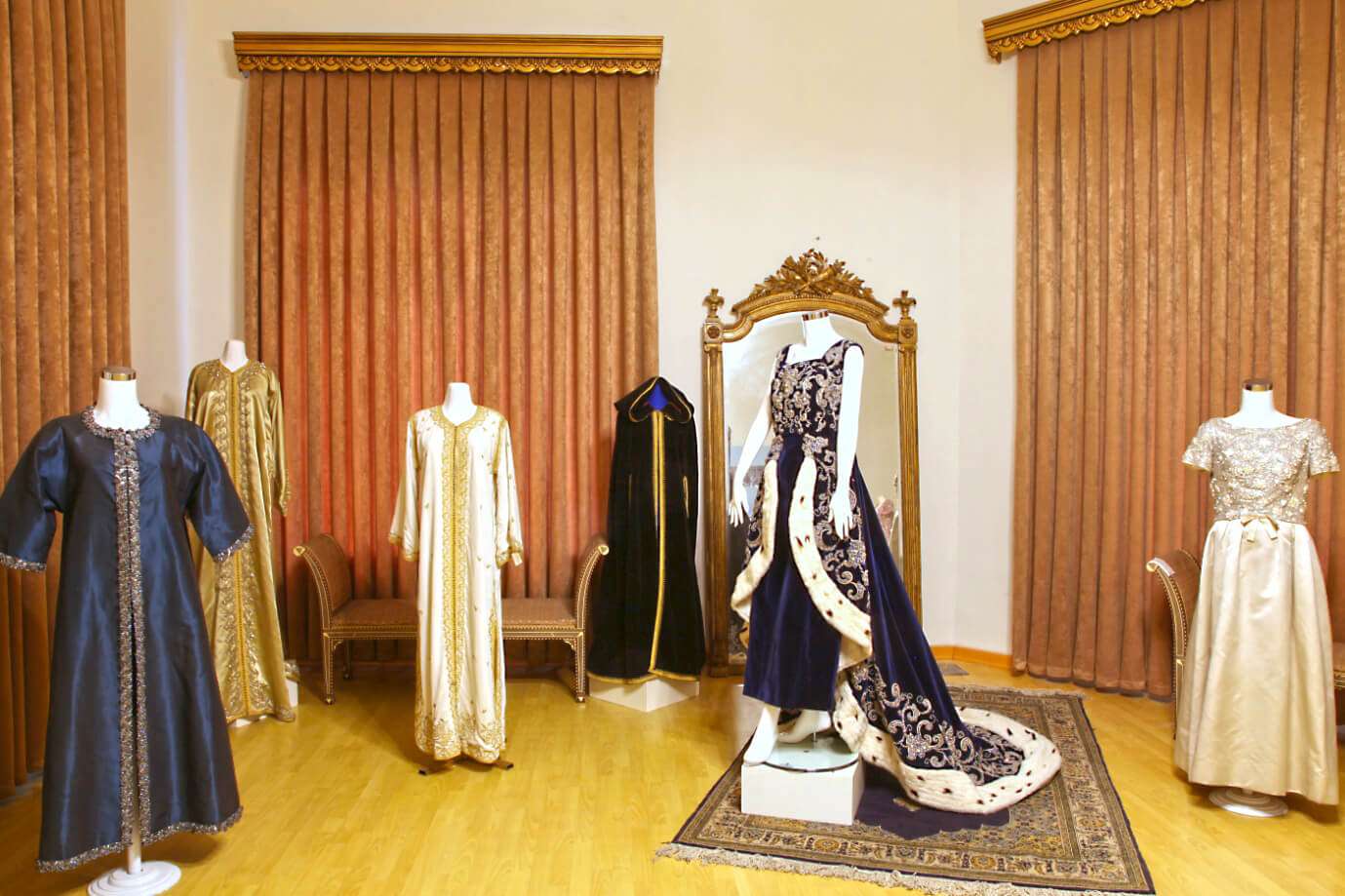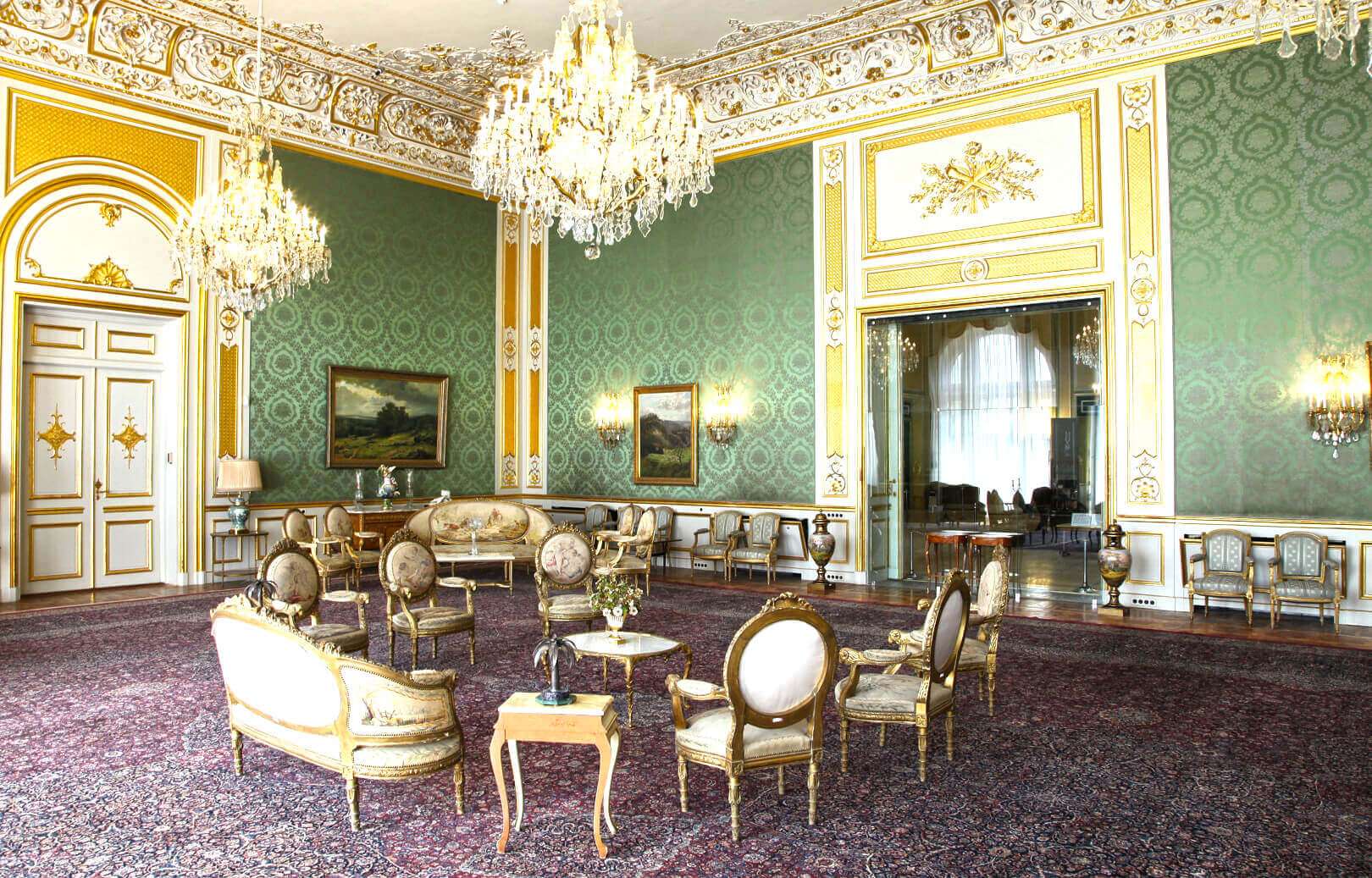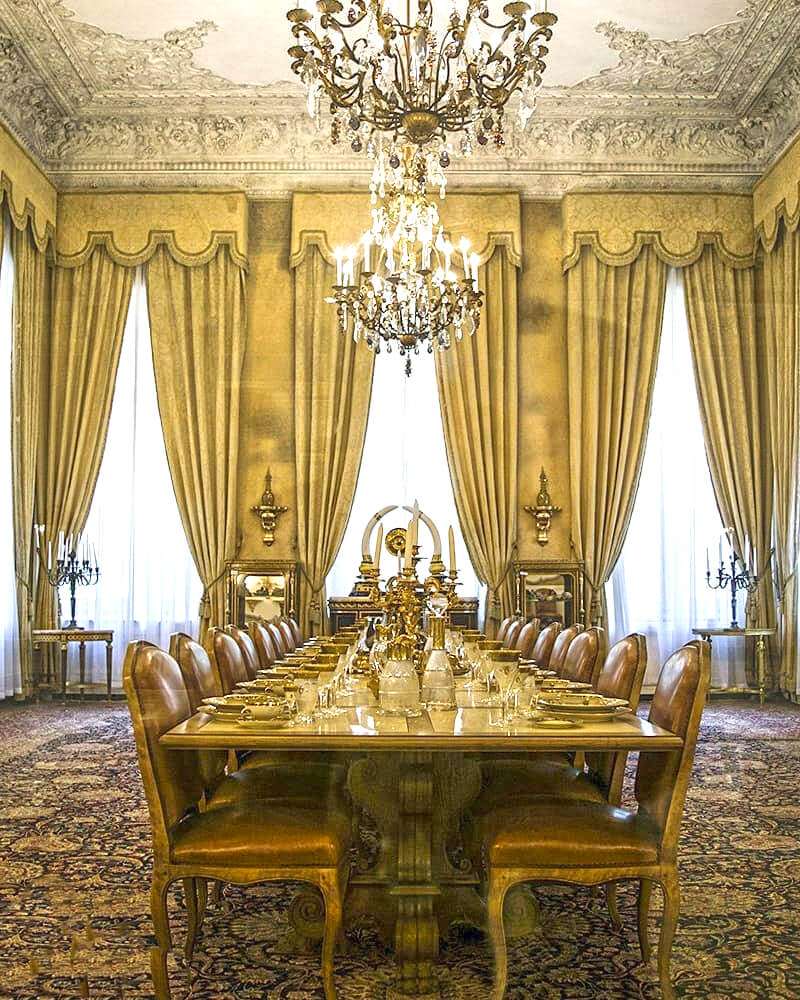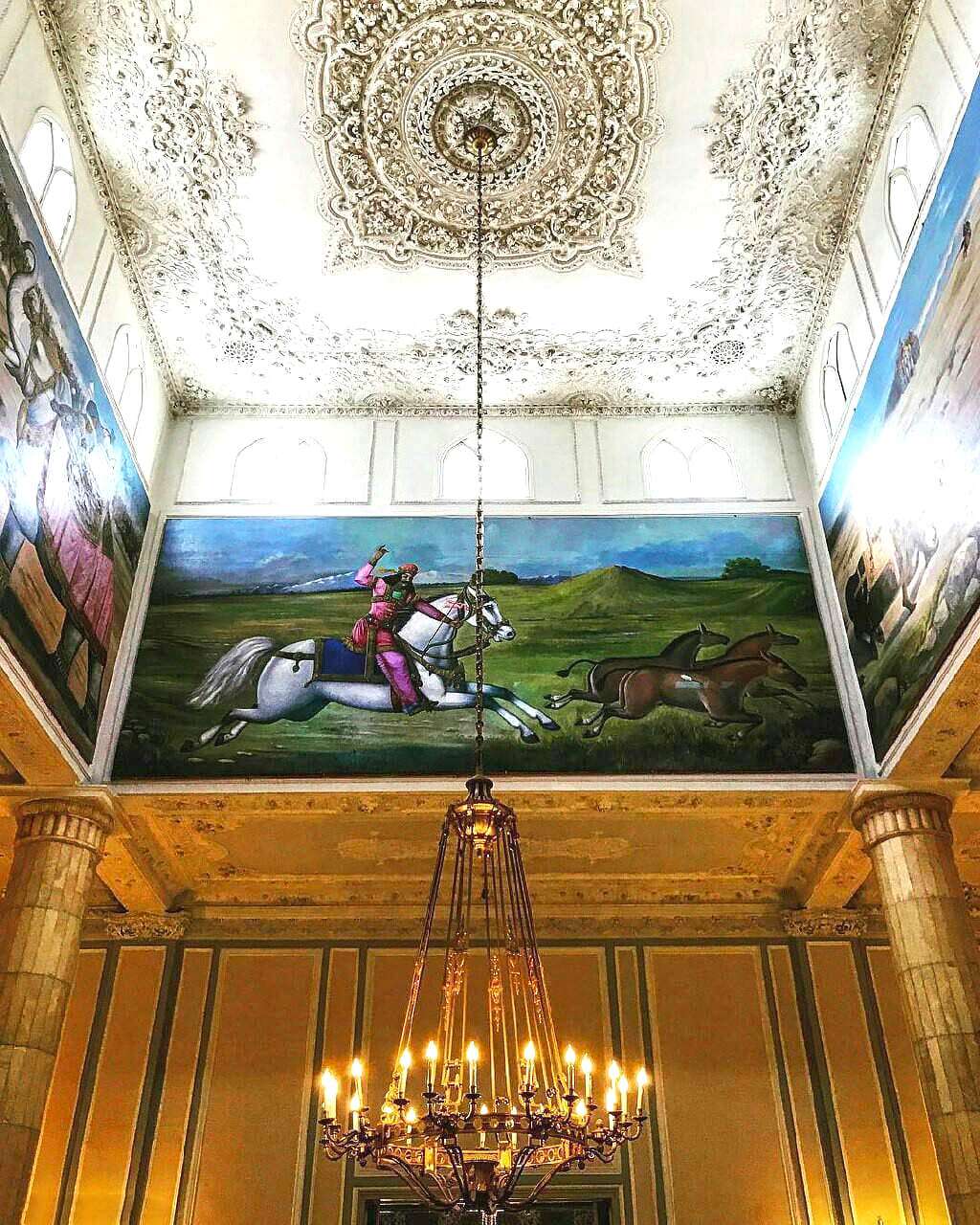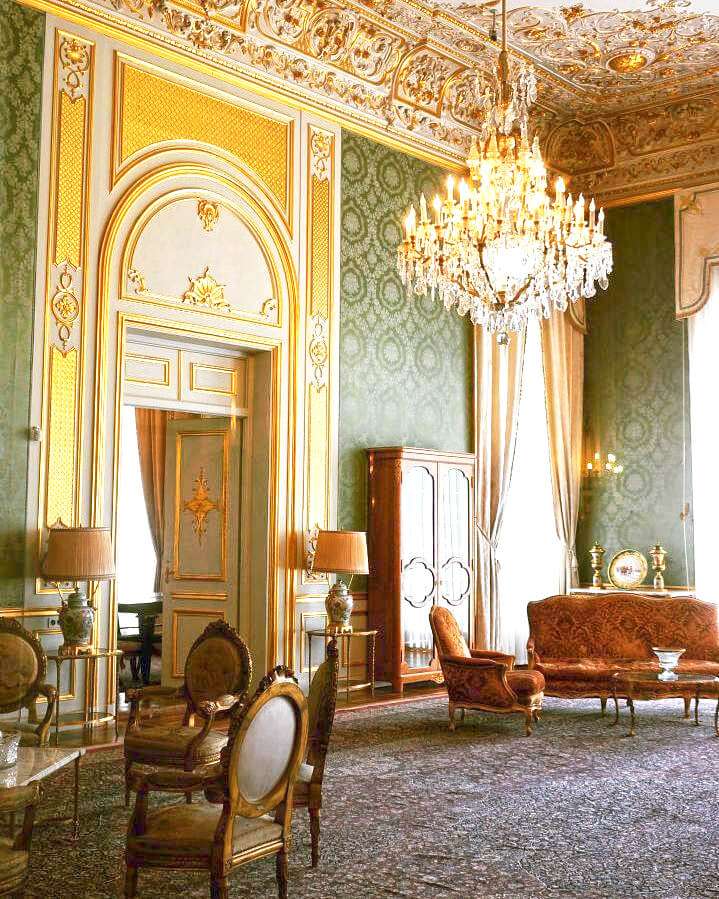Saadabad Palace

- Visiting
Saadabad Palace in Tehran
- ThemeHistory and Culture
- CodeIRSG53
- Duration4 hr(s) 30 mins
- Websiteen.sadmu.ir/
- Tell021-22752031
Exploring the summer palace of the Qajar and Pahlavi monarch, comprising 18 buildings in a vast garden.
- Spring9:00 -18:00 *
- Summer9:00 -18:00
- Autumn9:00 -17:00
- Winter9:00 -17:00
* Best Time
Photos of the Saadabad Palace
Virtual Tour
Explore the Saadabad Palace
Saadabad Palace
A vast expanse of land about 110 hectares in the north of Tehran, at the foothills of Mount Tochal, forms the palatial ensemble of Sadabad (Sa’dābād). A much smaller piece of land, near 8000 meters, used to lodge the summer house of Qajarid authorities. However, after the 1920 coup-d’etat, Reza Shah took hold of the old summer-house, and turned it into a much more expanded, bigger and loftier one. Then, in the 1970s, Mohammad-Reza Shah and his royal family became the residents of the Saadabad palace. The ensemble, including 18 palaces, provides a fascinating stroll to the Qajar and Pahlavi eras.
Eight gates open to the complex:
.Nezami gate (this gate was mostly used by Reza Shah)
.Zaferanieh gate (this gate is currently used by the presidency organization)
.Darband gate (this gate was often used by Mohammad Reza Shah)
.Darband square gate
.Ja’far Abad gate (the 1st one)
.Ja’far Abad gate (the 2nd one)
.River gate
.The white house gate
(Only Darband and Zaferanieh gates are open to the public.)
Highlights
- White Palace (Kakh-e Sefid)
- Green Palace (Khakh-e Sabz)
- Water Museum
- Master Behzad Museum
- Omidvar Brothers Museum
- Mir Emad Calligraphy Museum
- Fine Arts Museum
- The Special Kitchen
- Royal Costumes Museum
- Royal Weapons Museum
- Royal cars museum
- Royal Dishes Museum
White Palace (Kakh-e Sefid)
The gathering of numerous extravagant palaces in one complex flaunts the majesty of the Qajar and Pahlavi court. If you enter from Zaferanieh gate, Kakh-e Sefid (White Palace), also called Mellat palace, is within your walking distance. It is called White palace due to its white facade, which is among the most prominent stone works of the palace. The architectural plan of the building was developed by Mr. Khorsandi, Leon Tatavosian and the Russian Boris. This two-storey building, which is the most luxurious palace of the ensemble, used to be the summer retreat of Mohammad Reza Shah and his queen, Farah. The ceremonial and official affairs were also held in this splendid palace. Look at the hanging masterpieces in the corners of the entrance hall. These curtains were painted by Master Behzad (a famous Iranian artist) and his students, inspired by the stories of Shahnameh (the great national epic of Persia). In the first floor, there are two waiting rooms; the smaller one holds paintings in Greek style and it is located next to the Billiard Room. The bigger waiting room includes a 19th century piano attributed to Nicholas II era and a big silk tapestry produced in France. A small reception room is located in this floor containing Rosenthal and Moser crystals. Mohammad Reza shah’s office also holds the oldest oil painting by Aniello Falcone dating back to the 17th century. The second floor encompasses the resting room of Farah, furnished with items from Christian Dior. Their private living room in the same storey is decorated with silk embroidery, produced in China. Mohammad Reza Pahlavi’s resting room contains a sculpture by Arthur Waagen and the 19th century French furniture. The largest room in the building is the Big Reception Hall holding the biggest chandeliers and carpets. It measures 220 square meters, having the capacity to host more than 100 guests. The Ceremonial Hall in the same floor holds the Gold statue from Gorham factory and the silver-gold palm tree as the memorial of the White revolution. As you might have noticed, the ceremonial halls of the palace are decorated in French style; in that, many of the items were bought from the art auctions and antique stores in France.
The walls of the whole complex are covered with magnificent silk and taffeta fabrics. The high quality, natural marble stones along with the exquisite carpets cover the floor that will last an eternity. Take your time and roam through the palace and immerse yourself in the splendid beauty.
Green Palace (Khakh-e Sabz)
This striking edifice was a royal summer palace in the Qajarid time. Shahvand was the former name of the palace that Reza Shah built on a hill-top in Saad Abad ensemble. This palace was part of Ali khan-e Vali’s (a Qajarid Figure) properties. After the Islamic revolution, Shahvand was changed to the Green Palace since it mesmerizes you with the pleasant green hue of the marble stones. The most interesting part of this palace is the magnificent mirror hall at its center, covered with a carpet of 70 square meters, woven in Mashhad. The surrounding rooms are the dining room, the office, the marquetry room and an exquisite room with delicate in-laid decorations.
Water Museum
Further to the south-east, there used to be Mohammad Reza Pahlavi’s private office and the residence of his foreign guests. After the overthrown of Pahlavis (1979), this building became the water museum. Documents, tools, and equipment related to water and the statues of some scientists are kept here. The building consists of three parts: the main building, the flanking building, and an open space. The live model of irrigation systems, cisterns, and water mills are put on display in the open space.
Master Behzad Museum
This Qajarid building used to be Reza shah’s office and, later, his grandson’s residence. After being renovated, this edifice was dedicated to the work of master Behzad. Hosein Behzad (1894 1968) was a great miniaturist who followed the 16th and 17th centuries' style of the miniature painting. His work is also marked by some innovations of his own which could be summarized as abandoning the use of Mongol faces, adopting rules of perspective, deleting unnecessary details to prevent chaos in the work and other delicate creativities. Furthermore, this exhibition provides you with a gateway to the land of Persian literature, since part of master Behzad's work is dedicated to depicting scenes borrowed from Persian poetry.
Omidvar Brothers Museum
This museum was originally a coach-house and a resting house for coach drivers. It is named after two of the first daring Iranian adventurers and tourists, Omidvar brothers. They left Tehran in 1955, and during ten years, visited several continents and countries of the world, from Australia to the lands of Arctic. Their ten years of adventure gathered this treasure for the visitors to let them explore the diverse life of humans. The interior of this four-room building is decorated with beautiful plaster works belonging to the Qajarid era. The galleries show the map of their trips, their photos and their souvenirs from all around the world.
Mir Emad Calligraphy Museum
This edifice was the home of two of Mohammad Reza shah’s children, Alireza and Farahnaz. The palace followed the architectural style of both the Qajar and Pahlavi dynasties. After the revolution, it turned into the calligraphy museum and it was named after the most famous calligrapher of the 16th century, Mir Emad. He was a world-class artist who elevated Nasta’liq (a type of Persian calligraphy) to its climax. His School of calligraphy has been continued for 400 years and spread to Indian, Ottomans and other Islamic regions. His fine works were so worthy that people around the world paid gold for the exchange. You can also visit other pre-Islamic and post-Islamic calligraphies here.
Fine Arts Museum
Located on the southeastern side of the palace, this museum is called the Black Palace, because of black marble stones on its facade. It was built in 1941 and left unfinished due to Reza Khan’s exile. Later, between the years 1964-1965, some restorations were done and this alluring three-storey building became the Royal Court in 1968.
In 1983, it was converted to the Fine Arts Museum and an attraction for art lovers. The gallery covers paintings by prominent Iranian and non-Iranian artists.
On the ground floor, you can see works by contemporary Iranian artists such as Sohrab Sepehri. His paintings are prominent because of the poetic representation of his mystic concepts touched by a combination of eastern and western painting techniques. His most iconic collection, “Trees”, is on exhibit in this gallery.
On the first floor, there are European paintings from the 17th to the 20th century, including works by Salvador Dali, Shishkin, Jules Breton and some other painters. The iconic painting of this part is “Sleep” by Salvador Dali.
On the second floor, you will experience the transition of history through the perspective of paintings which were collected by Mohammad Reza Shah’s wife, Farah Diba. The darlings of the museum are portraits of the Zand king, Nader Shah, the Afsharid king and Fath-Ali-Shah, the Qajarid king.
The Special Kitchen
Very close to Darband river, about 20 persons of the royal family were sitting at the royal table and the Persian cuisine aroma was scattered everywhere. The feast was different on weekends when the political figures were the guests. The food of other palaces was also prepared here and it was carried to the white palace in wooden trays by a number of assigned servants. On special occasions, they would use special cars for carrying the prepared food under the observance of the royal guard. The kitchen was ruled over by Mr. Kabiri, who supervised 15 cooks specialized in various types of food, from desserts to European food. As a memorial, his maquette stands right there in the middle of the kitchen. This enormous kitchen dates back to the second Pahlavi era; though, due to the different architectural style, the basement dates back to the Pahlavi I era. The kitchen was redone and renovated in 1975 by a German company with the most modern kitchen accessories and equipment of the time.
The kitchen turned into a museum in 2011, comprising a central kitchen holding equipment and kitchen appliances, a cold room, a dining room and a gallery hosting some of the royal menus, silver cutlery, and other utensils.
Royal Costumes Museum
The building was once owned by Reza Shah’s daughter, Shams. She sold this summer residence to her brother, Mohammad Reza in 1964. The construction started in 1936 and finished in 1940.
During the years 1964-1979, it was the private museum of Pahlavi dynasty. A large number of antiques and presents were kept here. After the Islamic revolution (1979), this palace turned into the anthropology museum for several years. Then, in 2011, it became the museum of “Contemporary History and Royal Gifts of Pahlavi." The clothes of the Royal family are also on exhibit in this museum.
The first floor encompasses an entrance hall where you can see the Qajarid clothes and a documentary movie about the evolution of fashion in the two dynasties of Qajar and Pahlavi. In the first gallery, you can see the paintings of different clothes and the difference between Andaruni clothes, where women were free without being seen by others and Biruni clothes or the clothes worn in public. In the second gallery, women's and men’s clothes are on display. You can find the folk costumes from all over Iran in the third gallery. On the second floor, there are four galleries displaying the Pahlavi royal clothes. The seasonal and temporary galleries are also held here occasionally.
Royal Weapons Museum
This building was originally the residence of Mohammad Reza's brother, Gholam Reza Pahlavi. Now, over 110 items are on display at this museum; including battle rifles, firearms, and hunting rifles. These weapons belonged to the royal court of the second Pahlavi, some of them showcasing the first weapons manufactured in the royal factory of Iran and some of them were manufactured in the most famous gun factories of the world such as Winchester, Remington, and Spring Field. One of the most remarkable pieces here is the outstanding old front loaded rifle with its gun hammer made in India in the 16th century. In the basement, with its outstanding architecture, you can find historical pictures dating back to the Qajar and Pahlavi era.
Royal cars museum
This museum is undoubtedly one of the most interesting museums of the complex which was opened to the public in 2012. The items currently on display are manufactured by famous car companies of the world. The collection includes 3 Rolls-Royce cars, a speed buggy, 5 Mercedes-Benz, 6 motorcycles, one snowmobile, and one carriage. This museum is the only museum in Iran which solely displays royal cars; the cars all belonging to the Pahlavi era.
The museum has two galleries; the first displays the Royal Rolls-Royce cars and the second gallery, the royal Benz cars. Between the two galleries, you can observe one of the rarest and most iconic, classic cars manufactured by Mercedes-Benz; the beautiful SL 300. This exclusive car belonged to the queen Farah. Among the vehicles on display, you can also see Mohammad Reza Shah’s bulletproof Mercedes Benz 600.
Royal Dishes Museum
Located in the eastern part of the complex, this two-storey building was built by the famous Iranian engineer, Farman Farmaeiyan, during 1937-1940. The Royal Dishes Museum was originally decorated with carved stones. A few decades later, in 1972, it was redecorated with white marble stones. It was also renovated and expanded by the order of Mohammad Reza Shah's sister, Ashraf. It was not until 1994 that the palace was turned into a museum. Currently, over 500 dishes and decorative items are on display in five halls. Most of the pieces are manufactured by the most famous companies such as Rosenthal, Limoges, and Bavaria.
The dishes are categorized into three classes: Qajarid, Pahlavi II, and those which were presented to the royal family as gifts. These glorious items are classified into two floors. The first floor houses seven stately rooms: an office, a bar, a movie hall, a living room, a kitchen, a library and a dining room. Each one of the rooms was designed and decorated in accordance with its usage. The stairs resemble a horseshoe and lead to the second floor. The library room is not used as a library anymore and now forms a part of the Royal Dishes museum. It is filled with turquoise and crystal dishes made by the French company, Bakara. There is also a tun with flower and birds pattern designed by Limoges. The Living room tracks down the royal dishes including the dishes used at the feasts hold in honor of 2500 years of Iran’s history, some works of Salvador Dali, dishes that were ordered by Kamran Mirza during the Qajarid era, and also some Chinese dishes by Rosenthal and Limoges that were specially made for the Queen Mother, Tajol Moluk.
The second floor includes a bedroom, a dance and a music room and a living room. Among the pieces on display in the living room, you can see Russian enamelware, metal plates by Ilia Ivanov, French porcelain dishes by Limoges, Crystal dishes, and decorative dishes that were gifted to Mohammad Reza Shah. The bedroom preserves the beautiful porcelain and china enamel dishes manufactured by Rosenthal and Limoges. A beautiful ceramic compote on a bronze stem with a golden iris painted on it, a Chinese enamel vase with patterns of Japanese sour cherries, and a silver Bridge table, are also among the iconic items.
Important Information
Additional Info
The Green Palace and the Military Museum are closed to the public until the further notice
The entrance fee is about 2 €, and you need to pay about 1 € (or more) for each museums separately
The Museum is closed on National holidays (religious mourning days)
As the garden is considerably large, a van service is provided to transfer the visitors between the museums for a reasonable price
There are two cafés in the complex, one near the Mellat Palace and the other one near the Green Palace. Both are open from 9:00 AM to 6:30 PM (during the spring and summer), and from 9:00 AM to 5:00 PM (during the autumn and winter). In the museum of Omidvar Brothers, you have a great chance to meet Isa Omidvar on the first Sunday of every month.
Cost Info
- Burger in Manhattan Grill Restaurant 4 €
- T-bone Steak in Dedarino Restaurant -
- Destination
- Transportation Type
- Transportation Fee---
